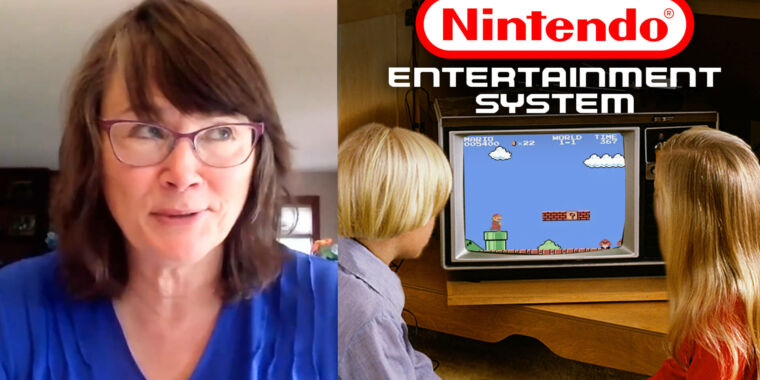
Ars Technica's latest War Stories video looks at the early days of Nintendo's 80s invasion of American shores and the marketing muscle it took to convince the American public that this Japanese company could revive a floundering video game market.
Building a brand
Perhaps more than anyone else, the person who helped massage Nintendo's early branding and image in the United States was Gail Tilden, the company's US marketing manager. When she started in 1983, Nintendo of America was still a small 70-person company focused on arcade games like Donkey Kong and one-off portables in the Game & Watch line.
That changed when Nintendo made the decision to bring its Famicom console to the US. Right away, Nintendo had to convince toy buyers and retailers that were still stinging from the dramatic crash of Atari years earlier."There was really a lot of oversupply at retail, and so things were being heavily discounted," Tilden recalls of the post-crash landscape for video games in the US. "You would just walk through the mall and see these bins of close-outs of cartridges that consumers were really seeming to say that they were tired of, that the games maybe didn't have enough diversity between different games."
The skepticism went beyond retailers, too. "Parents had seen that they bought these games for their kids and they didn't even play them," Tilden said. "Parents thought, 'I am not spending more money on a video game when you play it for 10 minutes and then you're not interested.'"
Look for the seal
To help solve that problem, Tilden and her team tried to market Nintendo's console more as a toy and less as a video game system. They renamed it the Nintendo Entertainment System and put accessories like the Zapper light gun and R.O.B. the robot up front in marketing materials, to differentiate it from previous game consoles.
They also developed advertising that "really focused on the whole family playing together," Tilden says. "It looks pretty corny today, but it's a 1980s family and the dad is playing, and the mom is excited about playing, and the two kids."
To help increase consumer confidence, Nintendo also deployed its own Seal of Quality, an idea Tilden said came from Good Housekeeping magazine. And speaking of magazines, Tilden also served as publisher of Nintendo Power, a marketing powerhouse that has some very specific content restrictions.
"There was one policy which was, you don't show the final boss or the final scene [in Nintendo Power]," Tilden says. "And the reason is—and I think I recall that [legendary Nintendo game designer Shigeru] Miyamoto was a big driver of this—was that's the payoff for all your hard work. You spent all this investment of playing this game and getting to the end. And to not let the consumer and the player really enjoy the success of that final moment, it was—felt like, let's just keep that for them."
Watch the full War Stories video to hear more about the thinking behind those first iconic "black box" game packages, the efforts to get celebrity star power behind the NES, and the drama of the NES' 1985 test launch in New York City. Tilden can also be seen in the recent Netflix documentary High Score.
"sold" - Google News
October 29, 2020 at 10:10PM
https://ift.tt/3kDQ0L6
War Stories: How Nintendo sold the NES to a skeptical country - Ars Technica
"sold" - Google News
https://ift.tt/3d9iyrC
https://ift.tt/3b37xGF
Bagikan Berita Ini














0 Response to "War Stories: How Nintendo sold the NES to a skeptical country - Ars Technica"
Post a Comment